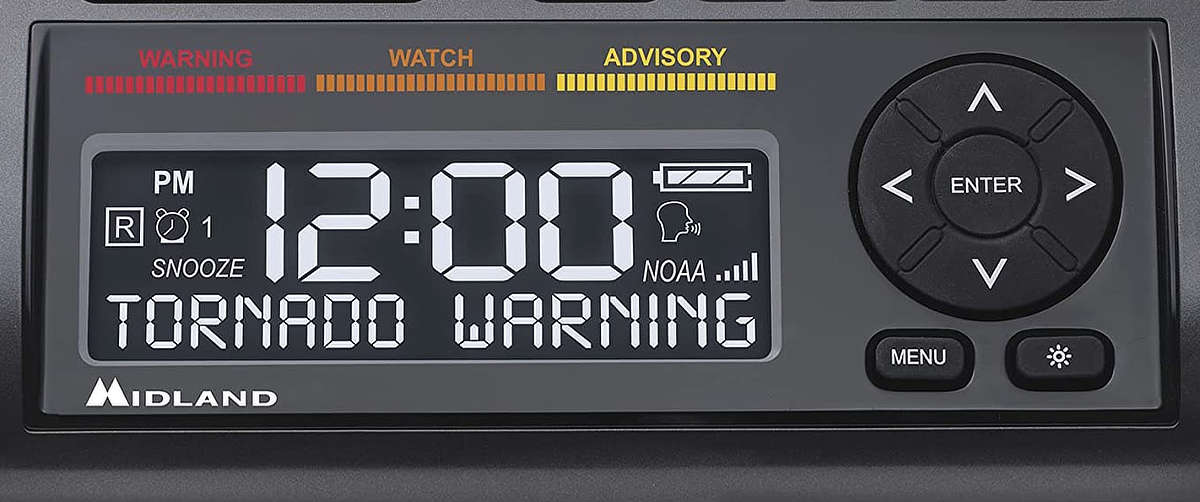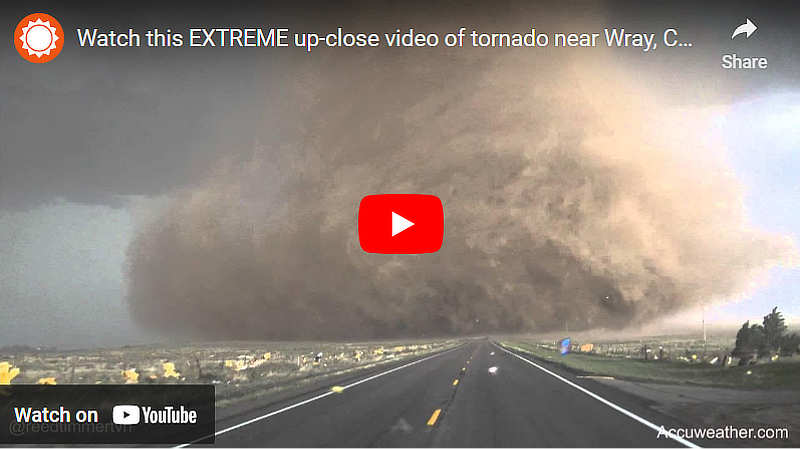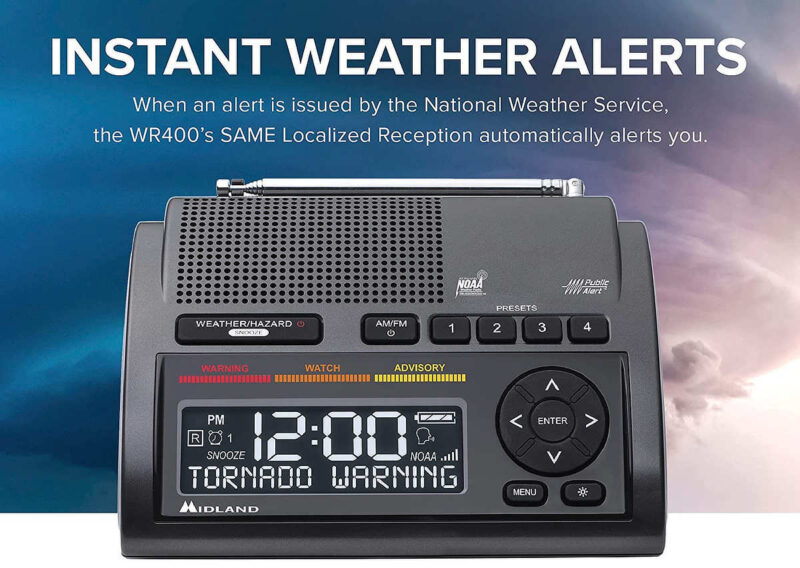Tornado Warning – What To Do

Here’s what to do when you’re in a Tornado Warning. I’ve been there a number of times during my travels. To make matters worse, many of those several encounters were while in our 5th-wheel camper! (That’s a bit scary). Anyway, lets get to it…
What To Do When There Is A Tornado Warning
You need to act quickly. At least at first. Lets say your phone (or NOAA weather radio) alerts that there is a tornado warning. This means that you are likely within a geographical area where you might be impacted. It doesn’t mean that it’s going to hit you. But then again, it might. So, how do you know?
Important Side note: Awareness. Prior to the warning, you should have already been aware of the tornado risk in your area. A tornado watch was likely issued prior. Be aware that a severe thunderstorm may also spin up a tornado. Know your daily weather forecast – especially during tornado season!
The standard answer: “Take Shelter Immediately”. Particularly if imminent, this is the best advice (more specifics below).
The following is my opinion. Given your own situation, use common sense. Respect the tornado. It’s no joke.
Tornado Location Information
Radar App
This is what I do first. Immediately, I bring up one of several weather radar apps on my phone. Find the tornado signature within the radar – with relation to your current location (your GPS location overlay on the radar map). Put the radar in motion. Is it heading anywhere in your general direction? If yes, be quick with your subsequent “what to do” list for a tornado warning. If no, well, don’t let your guard down. Don’t panic.
Most tornado warnings are initiated automatically by National Weather Service computers (radar indicated). That’s prior to eyewitness reports. Sometimes the tornado rotation remains up in the clouds. While other times it may descend down to the ground. Regardless, plan as though it’s on the ground…
TV Weather News
If you’re at home, turn on the TV. Your local network TV stations will be broadcasting the threat and will provide greater insight as to where the tornado is, and where it’s going. Likely referencing local streets, routes, and geographical clues so that you know where it is.
Bigger Tornadoes Have Wider Swaths Of Destruction
The tornado leaves behind a path / swath of damage and destruction as it cuts across the earth for several minutes, or even a half-hour or more! Mostly in a generally uniform direction with some zigs and zags. The width of the tornado may vary from say a few hundred feet, to as much as a mile wide! A tornado can grow in size and intensity very quickly. If you hear higher ‘F’ numbers, well, keep reading…
Incredible Video Footage Up Close F2 Tornado
Reed Timmer. Storm Chaser. I encourage you to watch the following 5 minute clip. The tornado reaches it’s max while approaching the 3 minute mark. Stunning power to behold. The lesson from this… a tornado warning is to be respected.

Tornado Warning – Take Shelter
Underground Tornado Shelter
The best place to shelter from a tornado is underground – with adequate protection overhead. In other words, a tornado storm shelter. If I was building a home in a tornado region, I would absolutely look into some sort of underground shelter. Most people don’t have an underground tornado shelter. So what’s the next best thing?
Note: Wherever you go, bring your cell phone for communications, radar, and news & information. In addition to a radar app, you might also keep a local TV station app for live streaming information.
Sheltering Inside Your Home Or Any Building During A Tornado Warning
- Basement location with maximum support overhead. Pre-emptively keep some supplies there too.
- Shelter in a ‘small’ interior room or hallway on the lowest floor possible. There’s more framing around you in a smaller room.
- Stay in the center of the room, and avoid corners because they attract debris.
- Avoid rooms with wide-span roofs (especially flat roofs), or auditoriums, cafeterias and gymnasiums.
- Better to be in rooms constructed with reinforced concrete, brick or block with no windows.
- Stay away from doors, windows, and outside walls.
Tornado Warning When You’re Outside
Regardless of where you are, it’s always about taking shelter. And the interior of a vehicle is not adequate shelter. In fact, it could be deadly – tossed around like a tin can. To make matters worse, a tornado may be rain-wrapped. In that case, you will not see it while driving.
If flying debris is hitting the vehicle, pull over (seat belt on), keep your head below the windows and cover it with your hands or a blanket.
You are not safer under an overpass or bridge. You are safer in a low, flat location.
Flying debris from tornadoes causes most fatalities and injuries.
My Experiences During A Tornado Warning
What I did during a tornado warning. I’ll just mention two experiences. Both while in our 5th-wheel camper.
Florida. Storms (and likelihood of tornadoes) were forecast a day ahead of time. Sure enough, the following morning my NOAA weather alert radio started blaring and my cell phone app began blurting a tornado warning. Being in a trailer, my heartrate went up a bit… Turned on TV. Discovered radar location of tornado #1. We were out of its path. Not long afterwards, another radar-indicated tornado warning. Tornado #2. Another miss. At this point the TV meteorologist made it clear that tornadoes could spin up at any time over the next several hours. I made the decision to take shelter at one of the community center buildings at the park. Mrs. J and I (and the dog) took the short rain-soaked drive over there, where others had already arrived. TV was on. People were anxious. Stayed almost 2 hours while 6 tornado warnings kept the heartrate up in the county that morning.
North Carolina. Again, in our camper, overnighting while on a trip back home. That evening, my phone bleated a ‘tornado watch’. Uh-oh, Don’t like this at night… Sure enough, here they come. Two rounds. One of them about 10 PM. The only shelter was fortunately right next to us. A relatively small bathroom building – but all concrete!. So I had a plan, just in case. This is where the phone’s radar app was great. When the first tornado warning came, I could clearly see where it was and where it was going. Although about 5 miles away, it was not heading in our direction. Later, around midnight, another alert. Here we go again… I checked my radar app. Decided we were okay.
A radar app (there are lots of them available) is an excellent tool in this regard, so long as you can interpret it properly.
Midland WR400 (one of the best NOAA weather alert radios)
Midland WR400
(amzn)

[ Read: 10 Ways To Know A Tornado Is Coming ]
[ Read: What A Tornado Sounds Like ]
